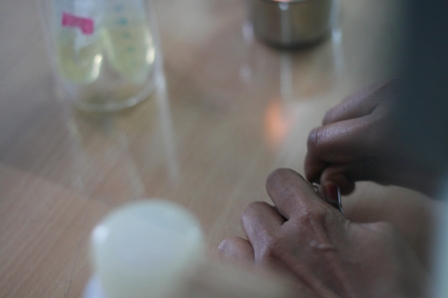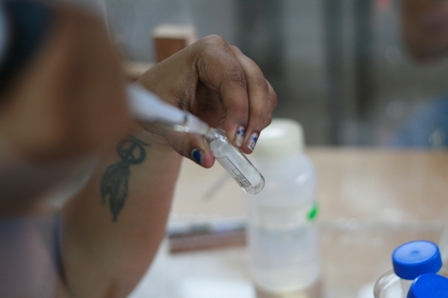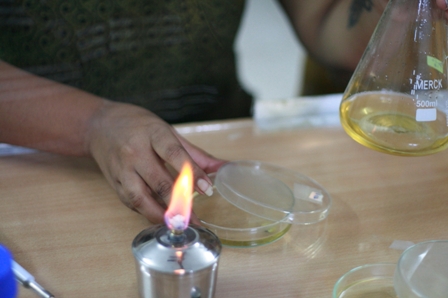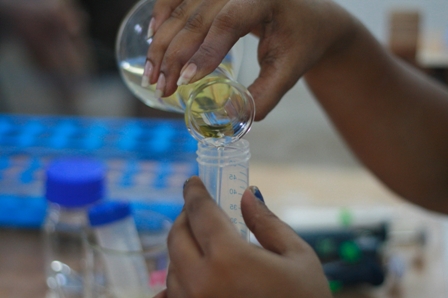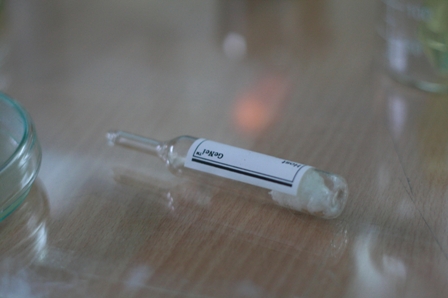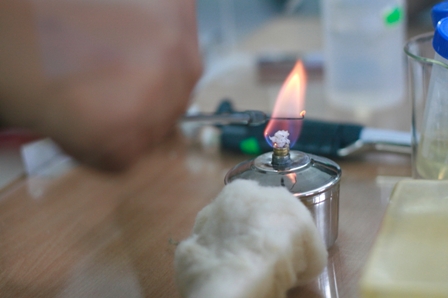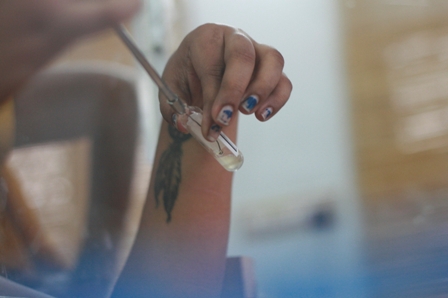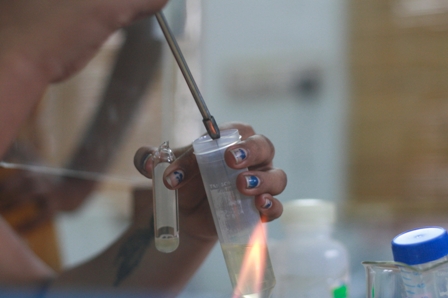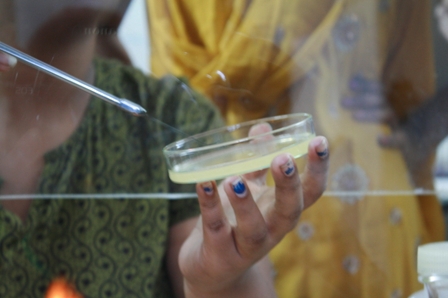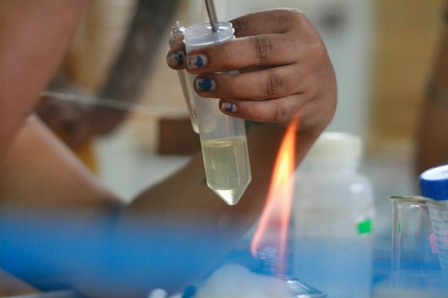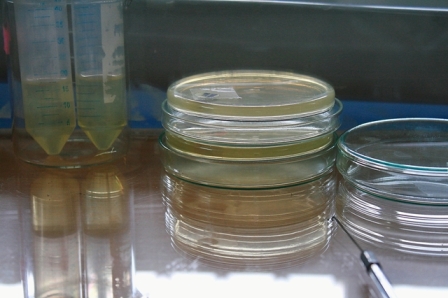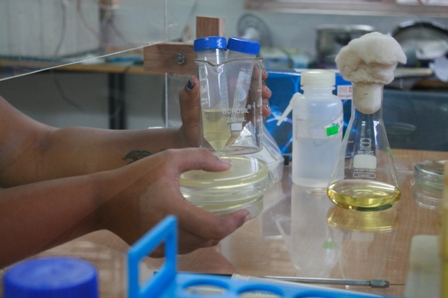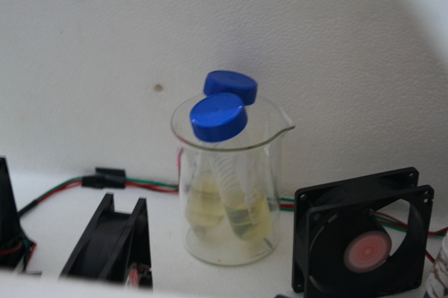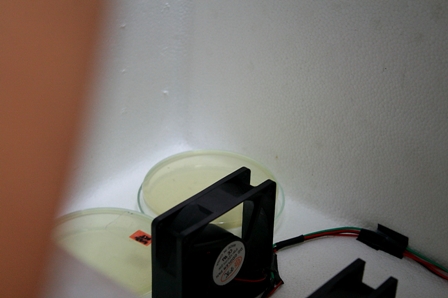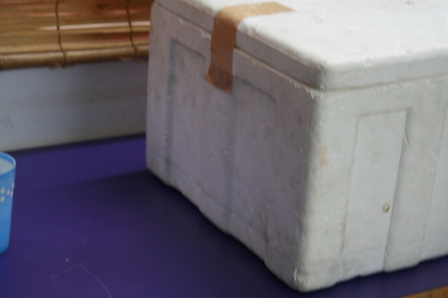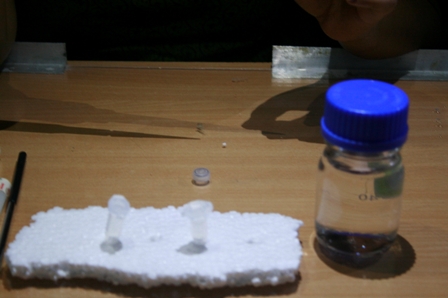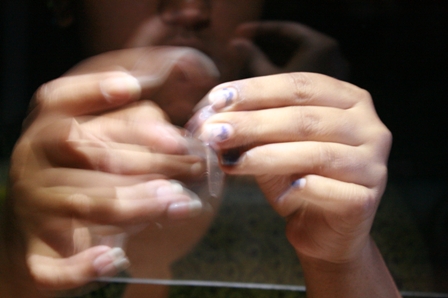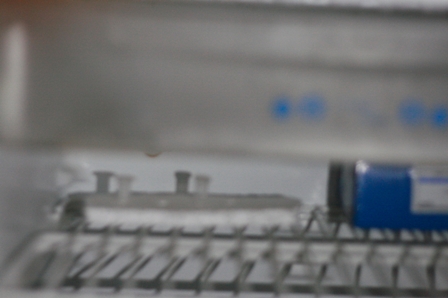Difference between revisions of "GFP Protocol Jugaad"
| Line 152: | Line 152: | ||
'''Preparation of Competent Cells''' | '''Preparation of Competent Cells''' | ||
| − | '''6.''' | + | '''6.''' Incubate the culture tubes at 37°C. Grow until OD A600 |
| − | |||
| − | |||
| − | |||
| − | |||
reaches 0.3, this takes about 2-3 hours. | reaches 0.3, this takes about 2-3 hours. | ||
| − | ''' | + | '''7.''' Chill the culture tubes on ice for 10-20 minutes. |
| − | ''' | + | '''8.''' Transfer the culture aseptically into sterile centrifuge |
tubes and spin down at 6000 rpm for 8 minutes, | tubes and spin down at 6000 rpm for 8 minutes, | ||
preferably in a refrigerated centrifuge at 4°C or spin at | preferably in a refrigerated centrifuge at 4°C or spin at | ||
Room temperature (RT). | Room temperature (RT). | ||
| − | ''' | + | '''9.''' Discard the supernatant. |
| − | + | '''10.''' Resuspend the cell pellet very gently in small volume | |
of ice-cold solution A (approximately 2 ml), using a | of ice-cold solution A (approximately 2 ml), using a | ||
pre-chilled pipette. Care must be taken not to remove | pre-chilled pipette. Care must be taken not to remove | ||
| Line 174: | Line 170: | ||
33 ml of solution A, resuspend gently. | 33 ml of solution A, resuspend gently. | ||
| − | ''' | + | '''11.''' Keep the centrifuge tubes on ice for 5 minutes. |
| − | Centrifuge at | + | Centrifuge at 8000 rpm for 15 minutes at 4°C or spin at |
RT. | RT. | ||
| − | ''' | + | '''12.''' Discard the supernatant and chill the tube on ice. |
Resuspend the pellet in 3 ml of ice-cold solution A. | Resuspend the pellet in 3 ml of ice-cold solution A. | ||
| Line 184: | Line 180: | ||
are very fragile at this stage. | are very fragile at this stage. | ||
| − | ''' | + | '''13.''' Aliquot 0.6 ml of the above suspension into 5 different |
pre-chilled 1.5 ml vials, aseptically. | pre-chilled 1.5 ml vials, aseptically. | ||
| − | ''' | + | '''14.''' Heat inactivate the ligated samples at 65°C for |
10 minutes. Spin at 5000 rpm for 2 minutes and keep | 10 minutes. Spin at 5000 rpm for 2 minutes and keep | ||
the vials on ice. | the vials on ice. | ||
| − | ''' | + | '''15.''' Aliquot 2 μl (10 ng) of control DNA each into 5 prechilled |
1.5 ml vials. | 1.5 ml vials. | ||
| Line 200: | Line 196: | ||
(0.6 ml) for one set of transformation experiment. | (0.6 ml) for one set of transformation experiment. | ||
''' | ''' | ||
| − | + | 16.''' Take a single vial of ligated sample and control DNA. | |
To this add 200 μl each of competent cells. Tap the | To this add 200 μl each of competent cells. Tap the | ||
vials gently and incubate on ice for 20 minutes. | vials gently and incubate on ice for 20 minutes. | ||
12 13 | 12 13 | ||
| − | ''' | + | '''17.''' Label the remaining 200 μl of competent cells as nontransformed |
cells, place on ice till the plating step (step | cells, place on ice till the plating step (step | ||
24). | 24). | ||
| − | ''' | + | '''18.''' Tap all the vials gently and incubate on ice for |
20 minutes. | 20 minutes. | ||
| − | ''' | + | '''19.''' Heat shock the cells by placing the vial(s) in 42°C water |
bath for 2 minutes, then return the vials to ice and chill | bath for 2 minutes, then return the vials to ice and chill | ||
for 5 minutes. | for 5 minutes. | ||
| − | ''' | + | '''20.''' Add 0.5 ml of LB broth aseptically to the vial(s) and |
incubate at 37°C (shaker) for an hour. This is to allow | incubate at 37°C (shaker) for an hour. This is to allow | ||
bacteria to recover and express the protein. | bacteria to recover and express the protein. | ||
| − | ''' | + | '''21.''' Pipette 200 μl each from the vials transformed with the |
ligated mix onto LB-Amp plates and spread thoroughly | ligated mix onto LB-Amp plates and spread thoroughly | ||
using spreader/pipette. | using spreader/pipette. | ||
| − | ''' | + | '''22.''' Pipette 200 μl of LB onto a LB -Amp plate and spread |
20 ìl of the cells transformed with control DNA. Label | 20 ìl of the cells transformed with control DNA. Label | ||
this as control plate. | this as control plate. | ||
| − | ''' | + | '''23.''' Plate 200 μl of non-transformed cells onto another |
LB-Amp plate to check for contamination. Label this | LB-Amp plate to check for contamination. Label this | ||
as non-transformed plate. | as non-transformed plate. | ||
| − | ''' | + | '''24.''' Incubate the plates at 37°C, overnight. |
| Line 241: | Line 237: | ||
'''Moment of Truth''' | '''Moment of Truth''' | ||
| − | ''' | + | '''25.''' Observe the plates under UV-light (312 nm). |
'''Note:''' If observed add 254 nm of less intensity of glow | '''Note:''' If observed add 254 nm of less intensity of glow | ||
could vary. | could vary. | ||
| − | '''Note:''' Steps 17 to | + | '''Note:''' Steps 17 to 25 explains the protocol for one set |
of transformation experiment. Carry out 5 such | of transformation experiment. Carry out 5 such | ||
transformations simultaneously. | transformations simultaneously. | ||
Revision as of 07:15, 4 September 2010
Materials
The list below provides information about the materials supplied in the kit.
The products should be stored as suggested. Use the kit within 6 months of arrival.
Materials……………………... Quantity………….store at
Ampicillin………………………..100 mg………….…..4°C
Host ………………………………1 vial……..………...4°C
Solution A………………………. 40 ml…………….….4°C
Control DNA……………………...10 μl….…………..-20°C
T4 DNA Ligase………………….…5 μl………………-20°C
10X Ligase Assay Buffer ….……10 μl……….……..-20°C
Insert………………………………20 μl………..…....-20°C
Vector DNA………………………10 μl ………….….-20°C
LB Broth……………………….....15 g ……………..…RT
Agar………………………………...5 g……..………... RT
1.5 ml vials……………………….25 Nos……….….... RT
Equipment :
-Centrifuge (preferably refrigerated)( DIY handheld centrifuge ).
-UV transilluminator (312 nm).
-Spectrophotometer.
Glassware :
-Capped centrifuge tubes.
-Conical flask.
-Petri plates.
-Test tubes.
Reagent :
-Distilled water.
Other Requirements:
-Crushed ice.
-Cuvette (of 1 cm pathlength).
-Micropipette, Tips.
-Thermometer.
-Water bath. ( DIY Water Bath )
-Incubator.(DIY Incubator )
-Sterilization Hood. ( DIY Sterlisation Hood )
Procedure:
Day 1:
Revival of Host
1. Break open the lyophilized vial, add 0.1 ml of LB broth.
2. Streak a loopful of the suspension onto LB plate & LB culture tubes. (in duplicates).
3. Incubate the plates at 37°C, overnight.
Ligation of Vector to Insert
4. Thaw the ligase assay buffer, vector and insert DNA.
Note: Thaw the ligase assay buffer vial on ice, store at -20°C immediately after use.
5. Set up ligation reaction as follows:
-Water : 11 μl
-Vector DNA : 2 μl
-Insert DNA : 4 μl
-Ligase assay buffer : 2 μl
-T4 DNA ligase : 1 μl
Mix the contents by tapping gently and incubate at 16°C waterbath, overnight.
Note: Set up five ligation reactions simultaneously.
Day 2:
Preparation of Competent Cells
6. Incubate the culture tubes at 37°C. Grow until OD A600 reaches 0.3, this takes about 2-3 hours.
7. Chill the culture tubes on ice for 10-20 minutes.
8. Transfer the culture aseptically into sterile centrifuge tubes and spin down at 6000 rpm for 8 minutes, preferably in a refrigerated centrifuge at 4°C or spin at Room temperature (RT).
9. Discard the supernatant.
10. Resuspend the cell pellet very gently in small volume of ice-cold solution A (approximately 2 ml), using a pre-chilled pipette. Care must be taken not to remove the tubes from ice during resuspension. Add remaining 33 ml of solution A, resuspend gently.
11. Keep the centrifuge tubes on ice for 5 minutes. Centrifuge at 8000 rpm for 15 minutes at 4°C or spin at RT.
12. Discard the supernatant and chill the tube on ice. Resuspend the pellet in 3 ml of ice-cold solution A.
Note: Resuspension is to be done gently as cells are very fragile at this stage.
13. Aliquot 0.6 ml of the above suspension into 5 different pre-chilled 1.5 ml vials, aseptically.
14. Heat inactivate the ligated samples at 65°C for 10 minutes. Spin at 5000 rpm for 2 minutes and keep the vials on ice.
15. Aliquot 2 μl (10 ng) of control DNA each into 5 prechilled 1.5 ml vials.
Transformation:
Note: Use single aliquot of competent cells (0.6 ml) for one set of transformation experiment. 16. Take a single vial of ligated sample and control DNA. To this add 200 μl each of competent cells. Tap the vials gently and incubate on ice for 20 minutes. 12 13
17. Label the remaining 200 μl of competent cells as nontransformed cells, place on ice till the plating step (step 24).
18. Tap all the vials gently and incubate on ice for 20 minutes.
19. Heat shock the cells by placing the vial(s) in 42°C water bath for 2 minutes, then return the vials to ice and chill for 5 minutes.
20. Add 0.5 ml of LB broth aseptically to the vial(s) and incubate at 37°C (shaker) for an hour. This is to allow bacteria to recover and express the protein.
21. Pipette 200 μl each from the vials transformed with the ligated mix onto LB-Amp plates and spread thoroughly using spreader/pipette.
22. Pipette 200 μl of LB onto a LB -Amp plate and spread 20 ìl of the cells transformed with control DNA. Label this as control plate.
23. Plate 200 μl of non-transformed cells onto another LB-Amp plate to check for contamination. Label this as non-transformed plate.
24. Incubate the plates at 37°C, overnight.
Day 3:
Moment of Truth
25. Observe the plates under UV-light (312 nm).
Note: If observed add 254 nm of less intensity of glow could vary.
Note: Steps 17 to 25 explains the protocol for one set of transformation experiment. Carry out 5 such transformations simultaneously.
